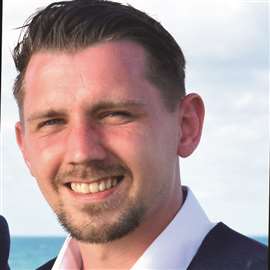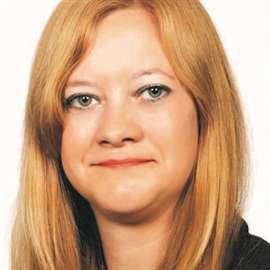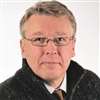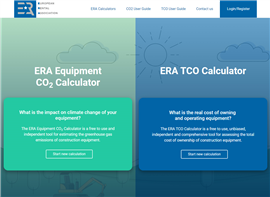Caterpillar targets power rentals as grid instability intensifies
02 July 2025
As ageing grid infrastructure struggles to keep pace with rising demand and renewable targets, Caterpillar is repositioning its generator business, enabling its dealers to help utilities around the world keep the lights on. Julian Buckley travelled to Cat’s Málaga Demonstration and Learning Center to find out more about the world’s largest construction OEM’s bridging power solutions and how they are being rented out
 A suspension bridge over the Tagus River at Twilight in Lisbon, Portugal. during the 25 April 2025 Iberian Peninsula blackout. Photo: Adboe Stock
A suspension bridge over the Tagus River at Twilight in Lisbon, Portugal. during the 25 April 2025 Iberian Peninsula blackout. Photo: Adboe Stock
At approximately midday on Monday, April 28, Spain’s national electricity grid suffered a widespread and abrupt outage, causing cascading failures that left large swathes of the country—and parts of neighbouring Portugal—in darkness.
Mobile and internet networks collapsed, traffic lights failed, and hospitals were forced to postpone non-essential surgeries. Public transport systems ground to a halt, with around 35,000 passengers evacuated from trains and metro services.
Iberian Peninsular blackout
Spain’s experience is far from unique. A lack of investment in transmission infrastructure, combined with the strain of increasing demand and decentralised inputs, has resulted in greater fragility across global electricity networks. Recent large-scale blackouts have been reported in Chile, Cuba, Venezuela, Pakistan and several US states.
For some manufacturers, however, this volatility represents a commercial opening. Among those positioning themselves to benefit is Caterpillar, the world’s largest construction equipment manufacturer.
Once regarded chiefly as a supplier of emergency backup power for industrial facilities and data centres, Caterpillar is now recasting its generator sets as a fundamental component in distributed energy strategies. “We see them as bridges to the grid,” said Brian George, vice-president of engineering and product management for large electric power at the company.
 Cat’s G3520K 20-cylinder natural gas generator set. Photo: Cat
Cat’s G3520K 20-cylinder natural gas generator set. Photo: Cat
The group has identified what George terms a “utility grid support opportunity” by delivering generation assets closer to demand centres—a model known as distributed generation.
Caterpillar claims to offer an “integrated” suite of capabilities, from system design to power generation, storage, control and switchgear, enabling the delivery of both temporary and semi-permanent microgrids.
Much of this work is coordinated from its Málaga Demonstration and Learning Center, set in the hills above Spain’s Costa del Sol. The Electric Power division, part of Caterpillar’s broader Energy & Transportation business, markets its products through the Cat, FG Wilson and MWM brands. Applications range from mining and agriculture to healthcare and disaster relief.
“We’re selling solutions, not just gen sets,” said Rich Osborne, vice-president and general manager for large electric power.
Spain’s energy system illustrates both the promise and pitfalls of rapid renewable expansion. Approximately 56 per cent of the country’s grid power currently comes from wind and solar, and the government aims to raise that figure to 81 per cent by 2030. But the swift deployment of renewables has not been matched by equivalent investment in storage. Without sufficient capacity to balance intermittent supply with demand, reliability risks remain.
It is in this context that Caterpillar is making its pitch. The company’s latest G3500K series generator sets—fuelled by natural gas or biogas—are designed for utility-scale deployment and can reach full load 40 per cent faster than prior models. The company claims they deliver fuel savings of up to €350,000 over a ten-year period. When configured for combined heat and power (CHP), overall efficiency can approach 90 per cent.
Distributed energy systems
Distributed energy systems, however, require more than engines alone. Caterpillar has developed an ecosystem of hardware and software to manage increasingly complex configurations. Central to this is its ECS controller suite, which ranges from the ECS 100, designed for small-scale standby systems, to the ECS 400, capable of orchestrating fully-fledged hybrid microgrids.
At the company’s Tucson Proving Ground, the ECS 400 now oversees a solar and battery hybrid system, reportedly delivering a 33 per cent reduction in fuel use and cutting maintenance costs by 25 per cent. The controller platform has been engineered for backward compatibility. “We don’t require customers to start from scratch,” said Vic Williams, commercial manager at Caterpillar.
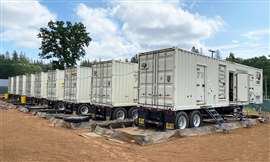 Petersen Power Systems units running on HVO, Photo: Caterpillar
Petersen Power Systems units running on HVO, Photo: Caterpillar
While the hardware is manufactured by Cat, power provisioning is handled through its dealer network under the Cat Rental Power Solutions banner.
In Northern California, for instance, Peterson Power Systems—Caterpillar’s dealer for electric power—has generated more than 8 million gallons of hydrotreated vegetable oil (HVO) since 2022 to supply utilities during public safety power shutoffs and post-wildfire grid outages.
“Power generation from internal combustion engines remains the industry standard for mitigating the potentially disastrous effects of outages while providing a solid base for enabling the increased use of microgrids comprised of solar and storage,” said John Krummen, executive vice-president at Peterson Power Systems. “We’re actively facilitating the use of renewable fuels like HVO to transition established power generation technologies to a lower-carbon future.”
During the 2019 wildfire season, Peterson also supplied HVO to customers preparing for utility-led power shutoffs—measures intended to reduce fire risk from ageing transmission infrastructure.
Yet while renewable generation has grown significantly in Spain, energy storage lags behind—potentially contributing to grid imbalances. While not necessarily the root cause of the April blackout, the lack of sufficient storage infrastructure remains a structural weakness.
The same principles apply at microgrid level. Caterpillar has developed a range of battery energy storage systems (BESS) to supplement its generator sets. These serve various purposes—from storing renewable power for later use, to supplying peak demand electricity, or charging electric equipment.
Microgrid level
The product line spans compact units such as the ETS, designed for telecom towers, through to mobile XES systems, mid-size ECE and ETS models, and the PGS (Power Grid Stabilisation) container systems.
These assets are designed to mitigate a range of grid disruptions, including voltage sags, frequency fluctuations and outright system failures. In hybrid configurations, BESS units can reduce generator fuel consumption and mitigate the performance impacts of sudden power draws—yielding potential savings in both operating costs and emissions.
“These are no longer just emergency assets,” George emphasised. “We see them as bridges to the grid.”
As Michele Trebbi, energy systems engineer at Caterpillar, put it: “We don’t see the grid as the enemy, but as a partner. We offer bridging solutions so the grid can continue delivering power to existing customers.”
STAY CONNECTED



Receive the information you need when you need it through our world-leading magazines, newsletters and daily briefings.
CONNECT WITH THE TEAM
